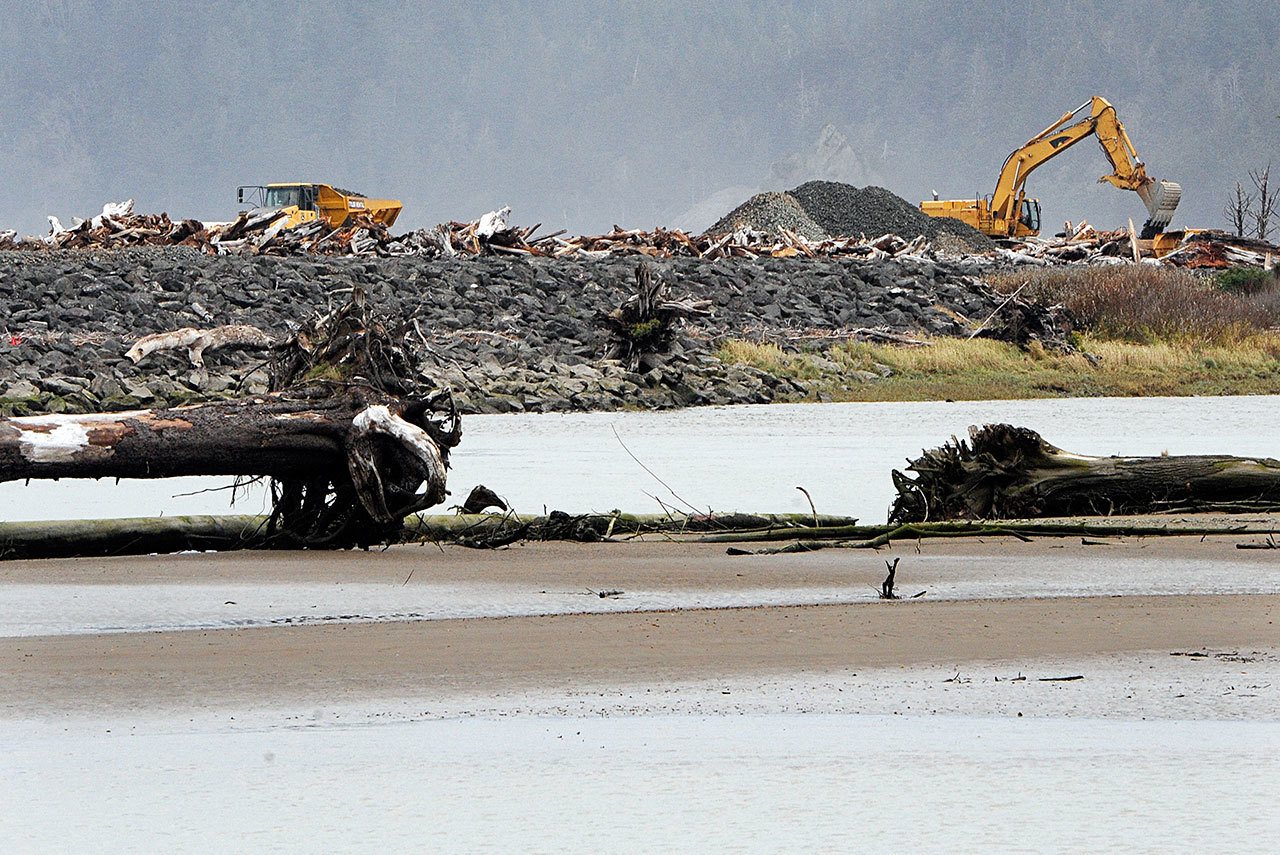LA PUSH — Work continues on a 300-foot-long damaged section of the Rialto revetment near La Push, with the U.S. Army Corps of Engineers estimating repairs will be completed in about three weeks.
Coastal revetments are sloping structures placed on banks or cliffs that absorb the energy of incoming water in order to prevent erosion. The damaged barrier is essentially a rocky jetty that protects La Push.
A 300-foot-long stretch of the revetment has failed on the west side, according to the Corps, and only the underlying gravel berm remains.
So far, the project is slated to cost about $1.6 million, said Patricia C. Graesser, U.S. Army Corps of Engineers public affairs supervisor for the Greater Seattle area.
The repairs are being conducted by Bruch & Bruch Construction Inc. of Port Angeles, Columbia Granite LLC of Olympia, and SEA Construction LLC of Raymond.
“A crew of three from the Corps is overseeing repairs to the revetment and expect to complete work in the next few weeks,” Graesser said.
It isn’t clear exactly when or how the revetment was damaged, but officials believe winter storms last year were likely the cause, said Bill Dowell, U.S. Army Corp of Engineers spokesperson.
Noticed in spring
The damage was first noticed in late March or early April of this year, he said.
Before construction crews and heavy equipment could access the revetment, a damaged stretch of Mora Road in Olympic National Park — the only access road to the site — needed to be repaired and widened, Graesser said.
A Corps team began widening the road Oct. 14 to allow trucks to haul material to the revetment for the needed repairs.
As of Friday, contractors were delivering stone to the site that will be used to strengthen the barrier, Graesser said.
The 3,000-foot-long revetment was built in 1974 and last rehabilitated after a breach in 1996, Graesser said.
The structure’s crest in the damaged area is between four and six feet lower than the design elevation and adjacent structure elevation, according to the Corps. Given the revetment’s condition, if no action was taken a breach in the damaged area would be highly probable.
Emergency repair efforts were prompted by a series of storms that arrived in the Pacific Northwest beginning Oct. 13, according to Graesser.
If the revetment had been breached during the storms, it could have exposed the Quileute reservation riverward shoreline, Coast Guard Station, training wall and Quileute Marina to direct wave action, Graesser said.
A training wall is an artificial embankment or wall for directing the course of a stream or river, in this case the Quillayute River, which runs to the east of Rialto Beach.
The training wall is not designed to protect the marina or other facilities from wave action and likely would have been destroyed if exposed to ocean waves and debris, Graesser said.
Because the marina is the only safe harbor for 60 miles along the Pacific Ocean, the Corps initiated emergency repairs to the revetment, Graesser said.
“Because of the threat of a breach, we received emergency funding to address the immediate threat,” she said.
“Additional work will still be required after storm season.”
The threat underscores efforts by the Quileute tribe to move much of its community. Much of the reservation — including the existing school site adjacent to First Beach, the Quileute Tribal Center, the Quileute Senior Center and many homes — is directly in the path of possible tsunamis or flooding from the Quillayute River, according to the Quileute tribe.
________
Features Editor Chris McDaniel can be reached at 360-452-2345, ext. 56650, or at cmcdaniel@peninsuladailynews.com.

